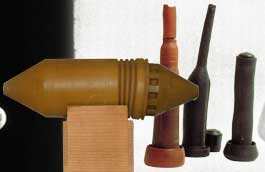The Insulators is a unique book recounting the process of finding found objects and repurposing them. As potential camera bodies, these objects are unlikely candidates. The slender forms, while difficult to work with, were amusing and provacitve.
In a catalog essay John Upton wrote “A famous historian of photography when asked why the history of cameras did not receive at least a fraction of the historian’s attention as the images they produce is said to have replied, “is anyone interested in Rembrandt’s brushes?” Indeed, for most people the process of viewing and decoding a photograph rarely includes consideration of the instrument that made it. However, the visual syntax of photographs made with stenopaic or pinhole cameras is markedly different from the photographs made by cameras employing optical systems. In pinhole photographs the depth of field is unlimited, and yet no point within the picture possesses the sharpness and clarity of an image made with a lens. Since pinhole cameras are unique, handmade instruments; they produce individual and eccentric images that are determined by their specific design unlike the relatively uniform appearance of photographs made with mass-produced cameras.”1
You can find more on unique cameras in the Sculptural Cameras segment.
1 John D. Upton. “Introduction.” Peggy Ann Jones: Convergence, 1988: 1.


|
|
|
|||||||
|
|
|
|
||||||
|
|
|
|||||||
 |
 |
|
||||||
|
|
|
|||||||
|
|
 |
|
||||||
 |
||||||||
|
|
|
|||||||
|
|
 |
|||||||
|
|
|
|
|
|
|
|
|
|